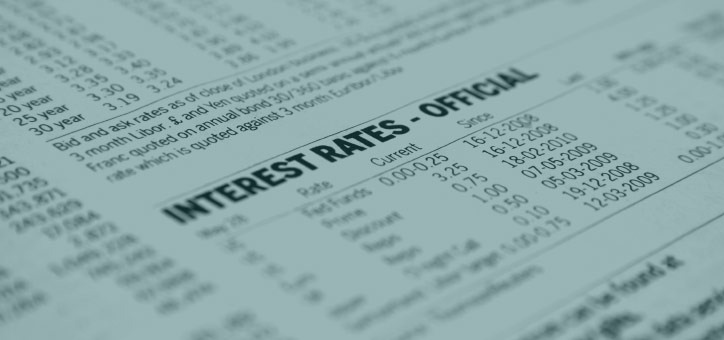There are two sides to economics: the theoretical and the practical.
In practical economics, you focus on how economics directly affects people in the real world. How are you really spending your money? What are the best tried and true ways to save money?
On the other hand, theoretical economics looks at theoretical numbers and their theoretical impact on the real world.
So, is MPC practical or theoretical, and why should you care?
Related: Ultimate Guide to Economics
Understanding MPC
MPC stands for marginal propensity to consume. The economic definition of this phrase is the amount of extra income you spend on the consumption of goods and services.
Let’s take a look at the meaning of each word in this phrase.
- Marginal: A function of a random variable obtained from several other variables
- Propensity: A preference for something
- Consume: To buy, use up
After breaking down the phrase, MPC literally means creating a function using our preference for spending or saving money.
To use an example, let’s say you get a raise at work and start to earn an extra $500 a month. How do you use the extra money? Is it put away in savings? Is it spent on a weekend vacation? How have you added it into your monthly expenses?
Marginal propensity to consume calculates what percentage of that $500 is spent on buying things and what percentage is put away in savings.
Below, we break down MPC to learn more about how it’s calculated and why it’s important in economics.
Related: What Is a Firm in Economics?
Factors that Determine MPC

There are a number of factors that play into how marginal propensity to consume is calculated. Below are four factors to take into account when calculating MPC.
Income Levels
If you are at a lower income level, any extra income that comes in will (statistically) see a high marginal propensity to consume. The reason for this is because individuals on lower incomes have more goods and services they need and want to buy, so when they have extra money they will go out and get what they need. On the flip side, those with higher incomes tend to save since they already have all the goods and services they need.
Temporary vs Permanent
You also need to take into account whether the extra income is temporary or permanent. A temporary income might look like a Christmas bonus at work; It’s a one time payment. People tend to save these temporary payments. On the opposite end, a permanent income would be getting a raise at work. You know you have more money coming in on a consistent basis, so you feel more confident in spending it.
Interest Rates
Higher interest rates encourage saving because you will be making more money by setting it aside. If your bank account offers zero interest on your savings, then you would be less inclined to keep your money in that account, right?
Consumer Confidence
When people are confident, they buy. If they know they are getting their paycheck tomorrow, they are more likely to spend today. But if they fear losing their income due to job loss or a recession, they will save their money and not make unnecessary purchases.
Calculating MPC
The marginal propensity to consume is calculated by dividing the change in consumption by the change in income. The common formula for this is the following:
MPC= C/Y
We’re going to break down the calculation of MPC into three steps, so you can easily calculate your own MPC based on your spending and saving habits.
Step 1: Find Change in Income
To find the change in income, you first need to identify the starting income and the most recent income. Once you have those two numbers, subtract your starting income from your recent income.
For example, a fictional business woman (Jan) just got a raise at her job. She started the year making $40,000 but after the raise she now makes $50,000. The change in her income is $10,000.
Step 2: Find Change in Consumption
Now it’s time to calculate the change in consumption. We will again need two points to do this calculation. Our starting point is how much money did you spend before the raise. The second point is how much do you spend after earning more money. Just like in step one, you will be subtracting these two amounts.
Let’s look at Jan. On her original income of $40,000, she spent $35,000 on consumption. That includes things like rent, food, pet toys, etc. The remaining $5,000 was put away for savings. After getting her promotion, Jan decided to spend a little extra each month on a spa day. She is now spending $37,000 on consumption. Her change in consumption would come out to $2,000.
Step 3: Divide Consumption by Income
After steps one and two, you are ready to divide. All you need to do is divide the change in consumption by the change in income. This should give a number somewhere between 0 and 1. If your result is 0, that means none of the additional income is being consumed, while a result of 1 means that all of your extra income is being spent.
Our friend, Jan, decided to calculate her MPC and divided 2,000/10,000. Her marginal propensity to consume came out to be .2 or 20% of her extra income is being spent.
Related: What Is Crowding Out in Economics?
The Importance of MPC

MPC is important when considering economic policies for nations, businesses, and even families or individuals. How you spend and save your money speaks to your mindset and your financial status, both of which have an impact on a region’s economy. Below we will break down MPC in relation to a country and in relation to individuals.
MPC and Countries
MPC varies between countries. As we stated above, richer individuals and nations tend to save more than their poorer counterparts. Some economists believe that stimulating the economy would be best done by taking purchasing power from the rich and giving to the poor. This is due to the poorer individuals spending more money and putting it back into the economy. Nations around the world have various degrees of MPC based on their development.
MPC and Individuals
Even though the majority of marginal propensity to consume is calculated based on a society as a whole, individual spending habits can vary. A 65-year-old retiree will spend more of their extra money than a 65-year-old still in the workforce. As an individual, it is important to know where your money is going.
MPC: Final Thoughts
To sum up, marginal propensity to consume measures an individual’s or nation’s spending habits. While it varies between income levels, it is mainly used to determine the consumption habits of entire nations. MPC is not a theory, but rather a formula that can be used to calculate someone’s consumption habits.
Take this time and try to calculate your own marginal propensity to consume using the steps above. It’s important to know, how much money are you truly spending?
Related:





